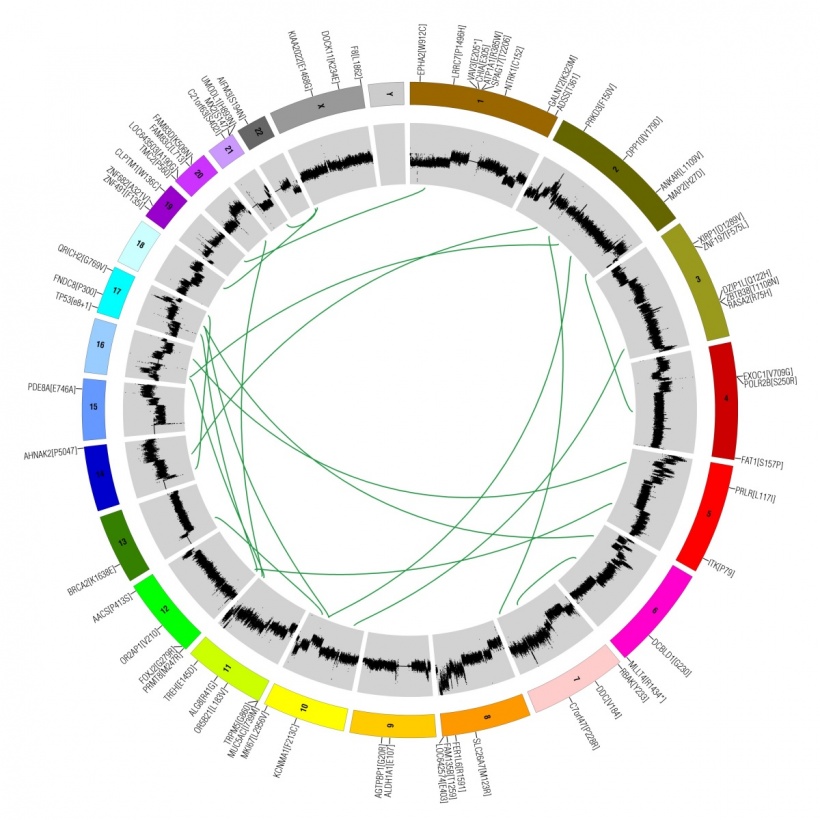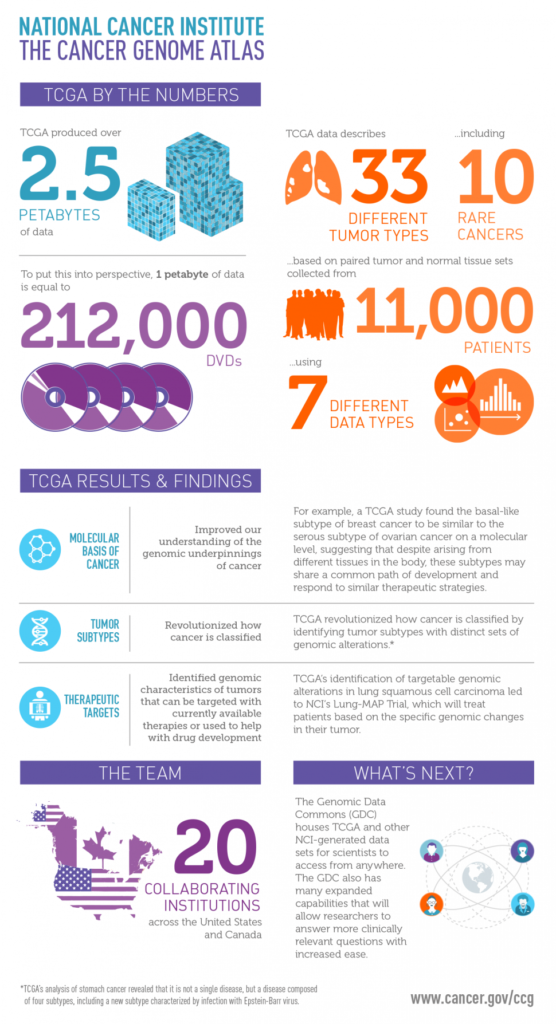September 13, 2019
Behind the Scenes at the Cancer Genome Atlas

For the last fourteen years, researchers around the country have undertaken a massive effort to research the genetic make up of over 30 different types of cancer cells. Their goal was to learn about cancer at the molecular level and use that knowledge to develop new treatments. Along the way, the data they have collected from 11,000 patients is so detailed that it would take over half a million DVDs to store it.
Glioblastoma multiforme has long puzzled researchers and has proven especially difficult to understand or treat, which is why the Cancer Genome Atlas selected it as one of the first cancers to target in 2006. The database collects a variety of information about tumors including mutations, copy number variations, proteins, and DNA methylation, the process by which gene transcription can be repressed within a DNA segment. Additionally, patient profiles and pathology slides are recorded in the database.
Research in glioblastoma multiforme has already seen major breakthroughs because of the work of the Cancer Genome Atlas. For instance, scientists have been able to identify a novel subtype of GBM which affects younger adults by identifying its unique methylation signature. Scientists believe that this signature may be responsible for increased survival rates among these patients.
Additionally, researchers have been able to identify four different molecular subtypes of GBM which all respond to different aggressive therapies. Patients can now be treated for GBM based on their individual subtype which may result in better outcomes. Research has also shown how some tumors can become resistant to treatment after standard chemotherapy. This finding will allow doctors to develop new strategies that will help them avoid activating this drug resistance mechanism within the cancer cells.
The landmark GBM study based on data from the Cancer Genome Atlas was published in Nature in 2008, and another in 2013, and dozens of papers have been published since then. Scientists continue working with this data today to provide top doctors around the country with the information they need to improve and develop important new treatments for GBM and dozens of other cancers affecting their patients.
